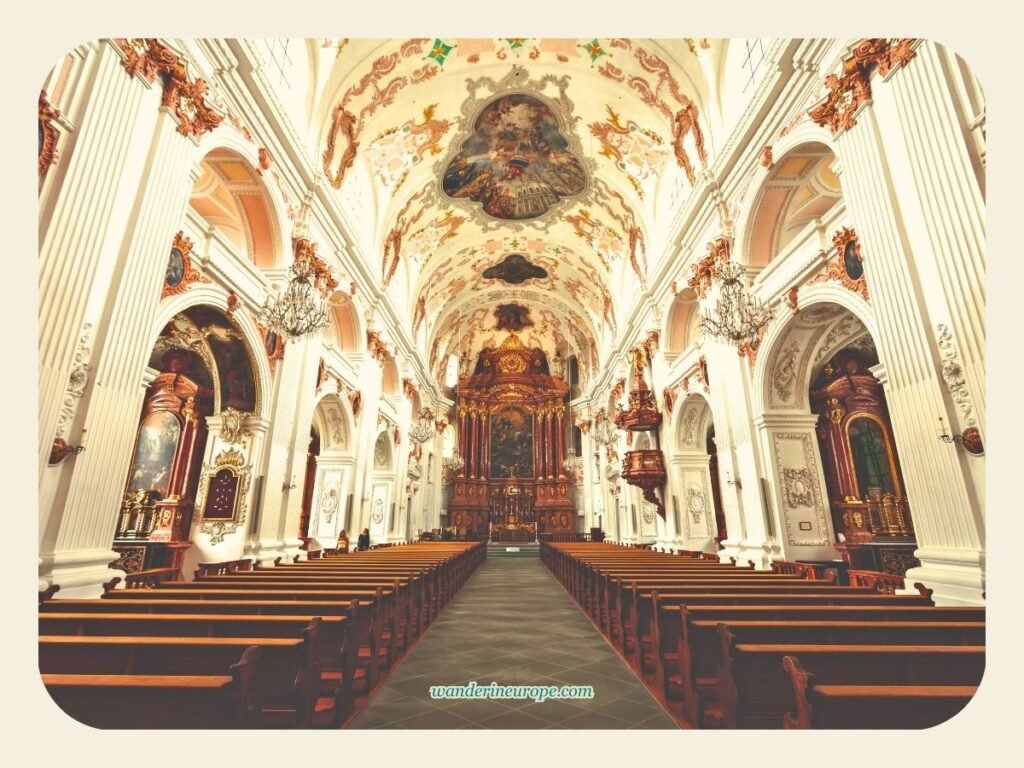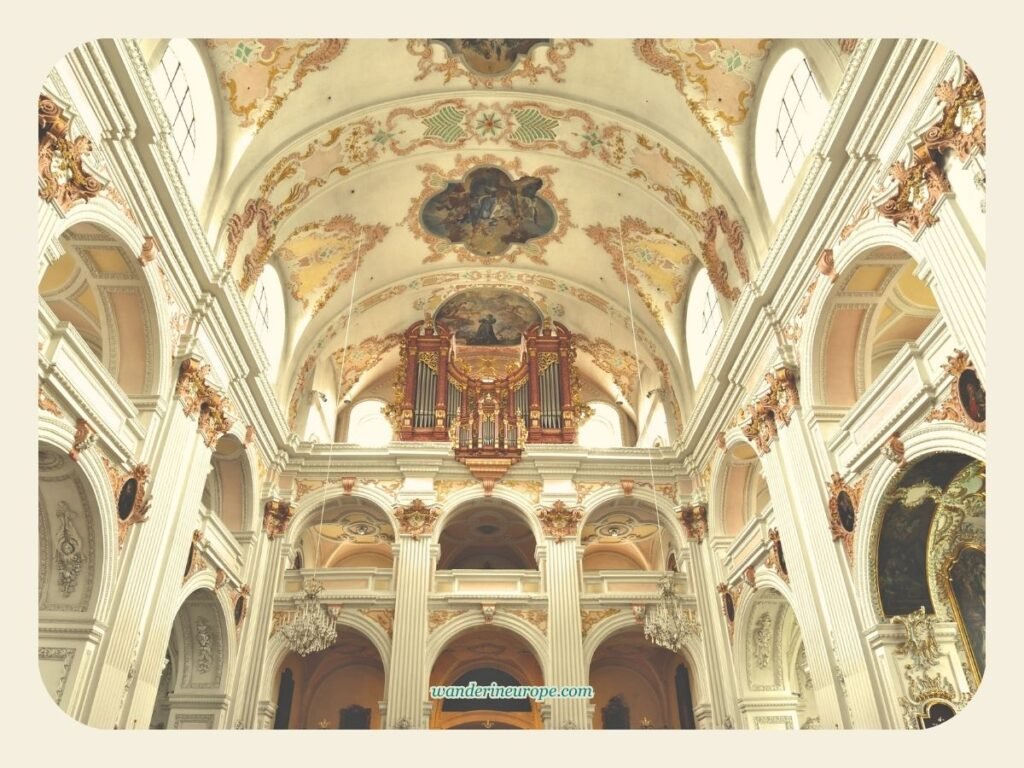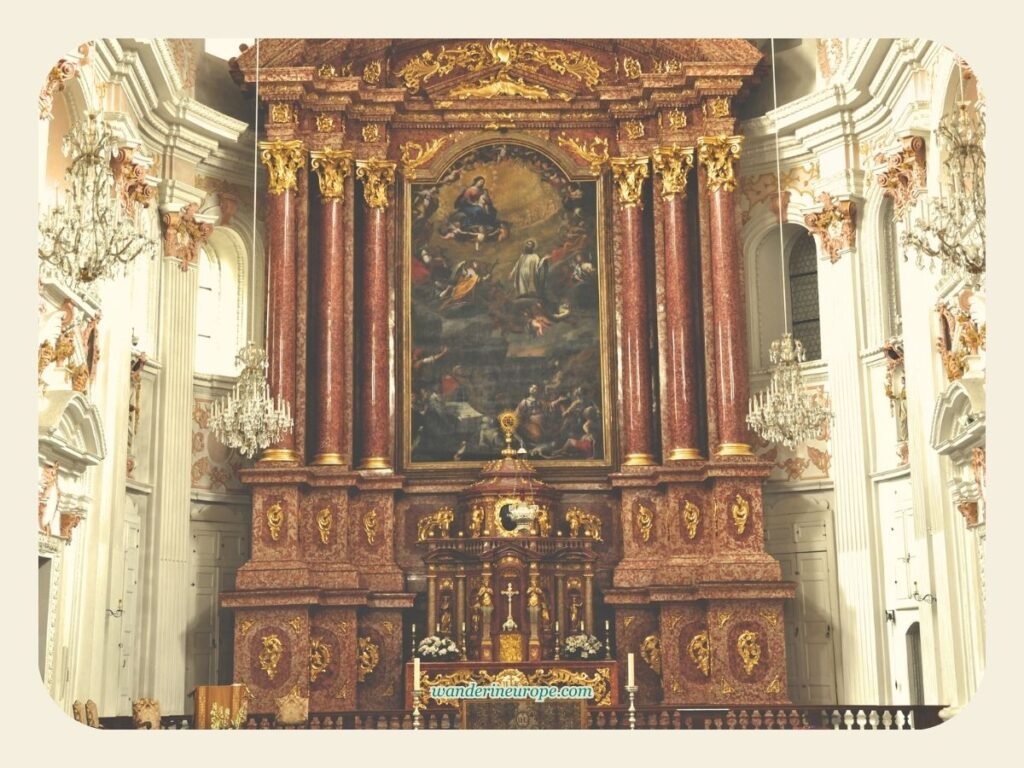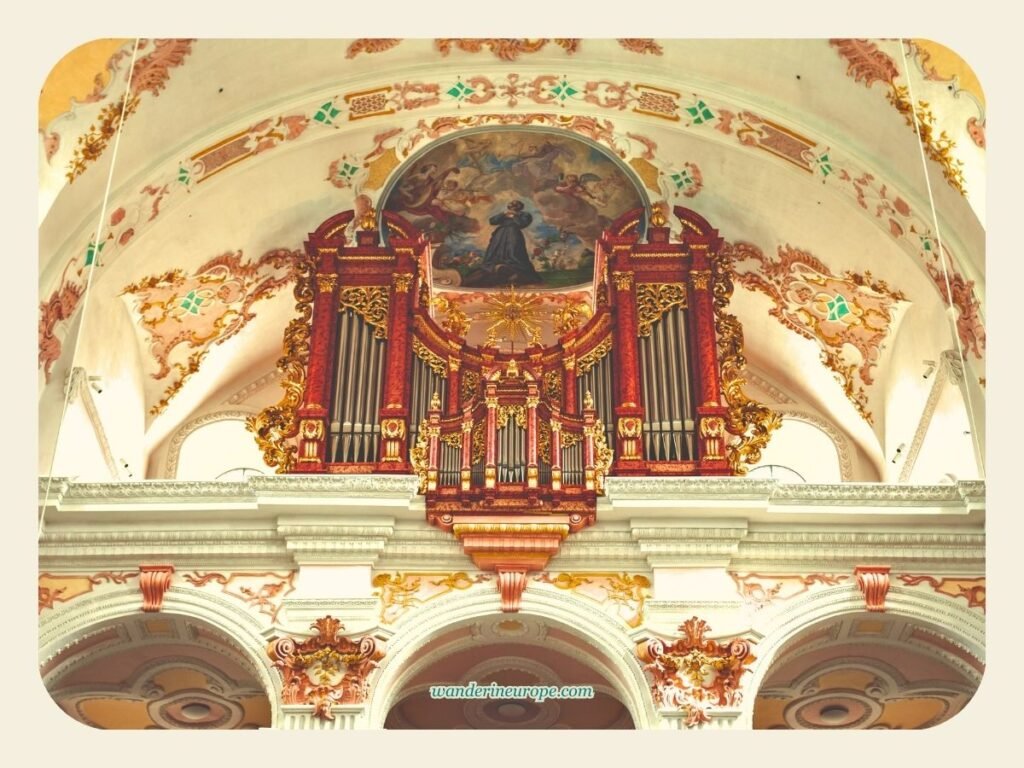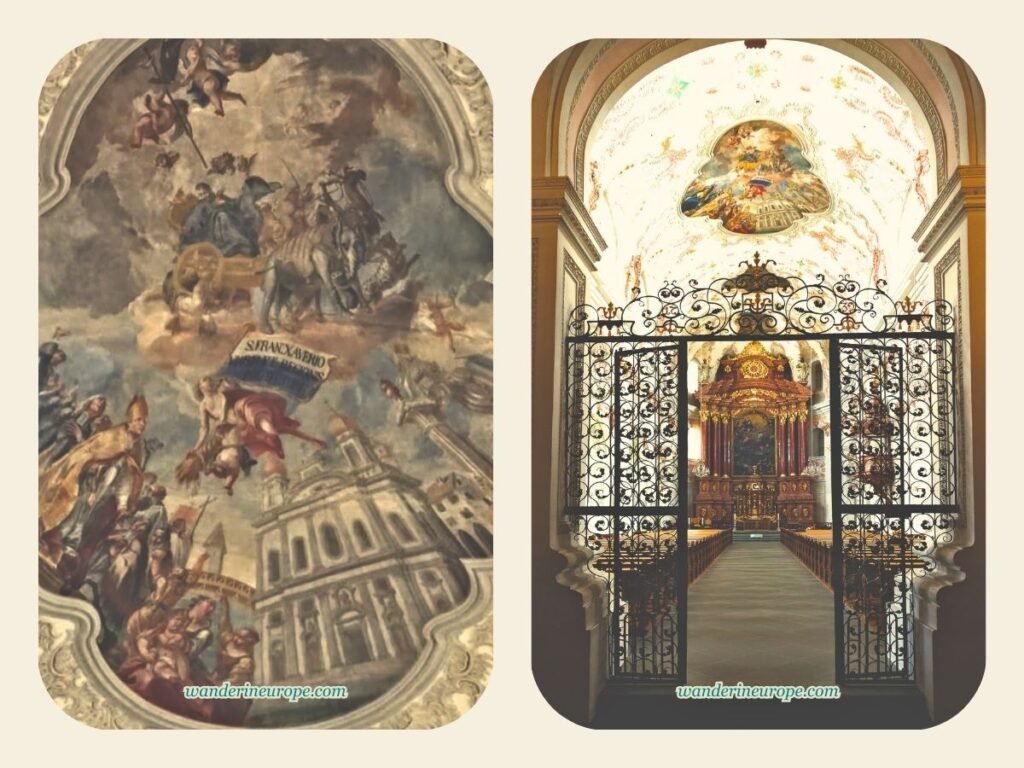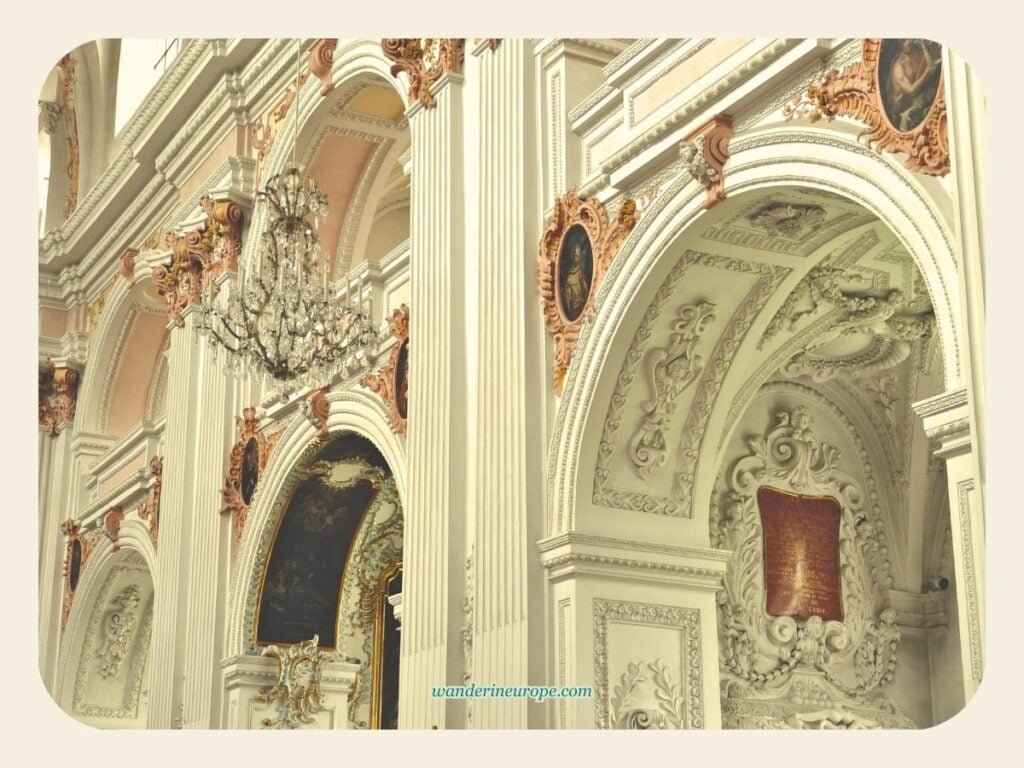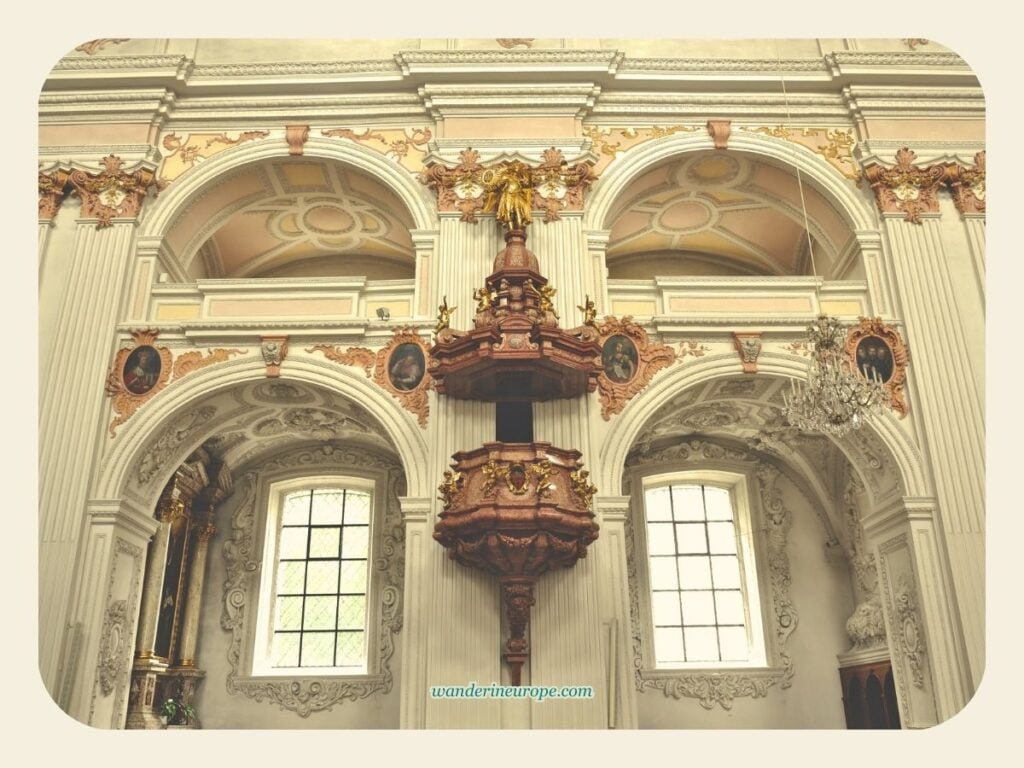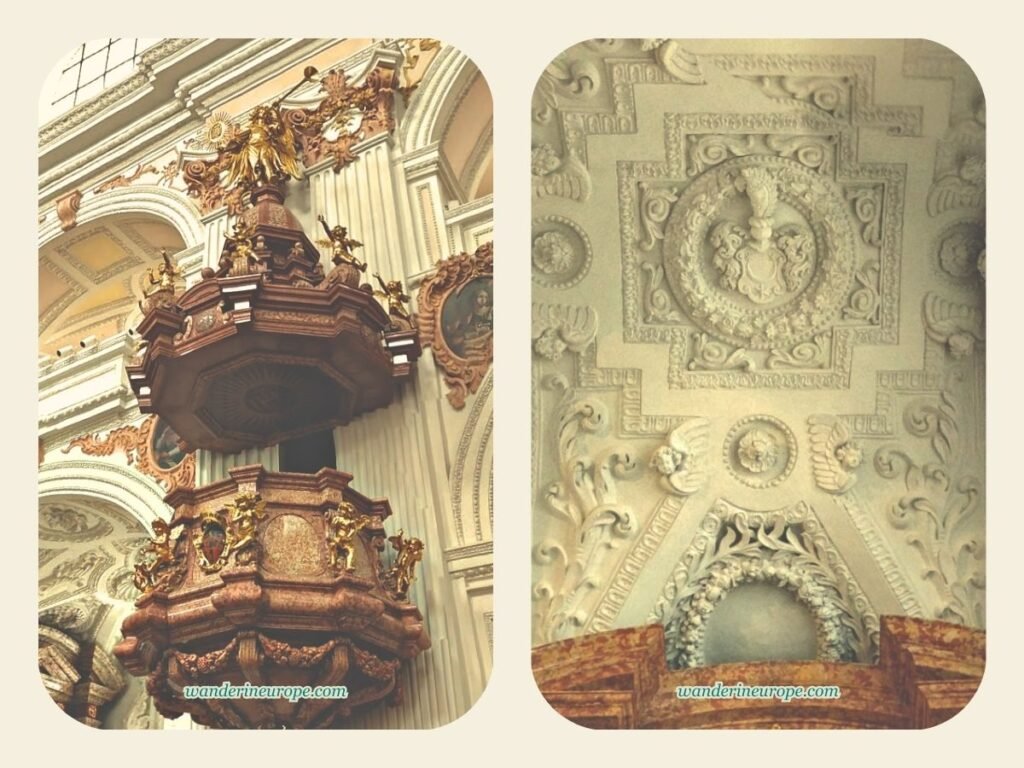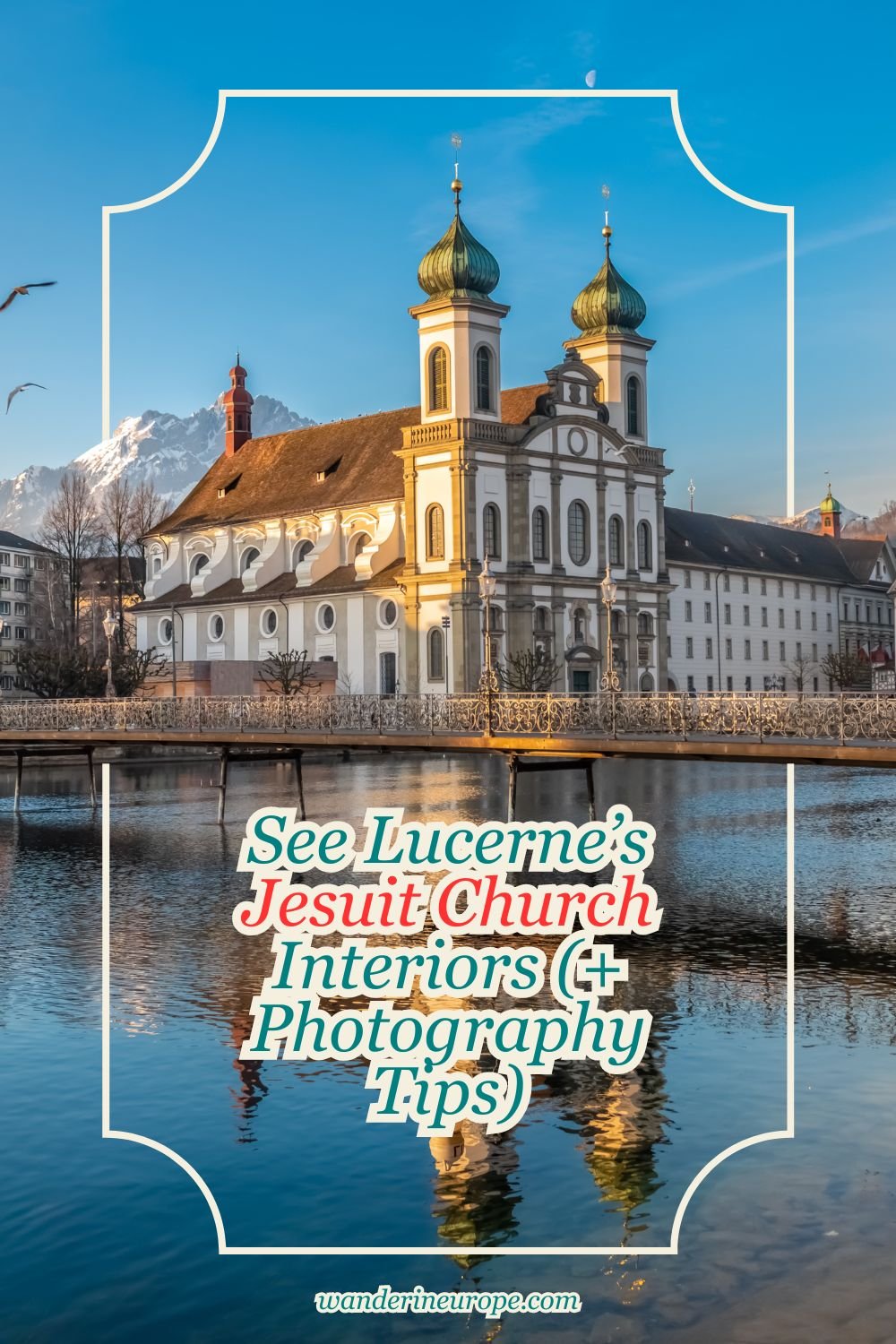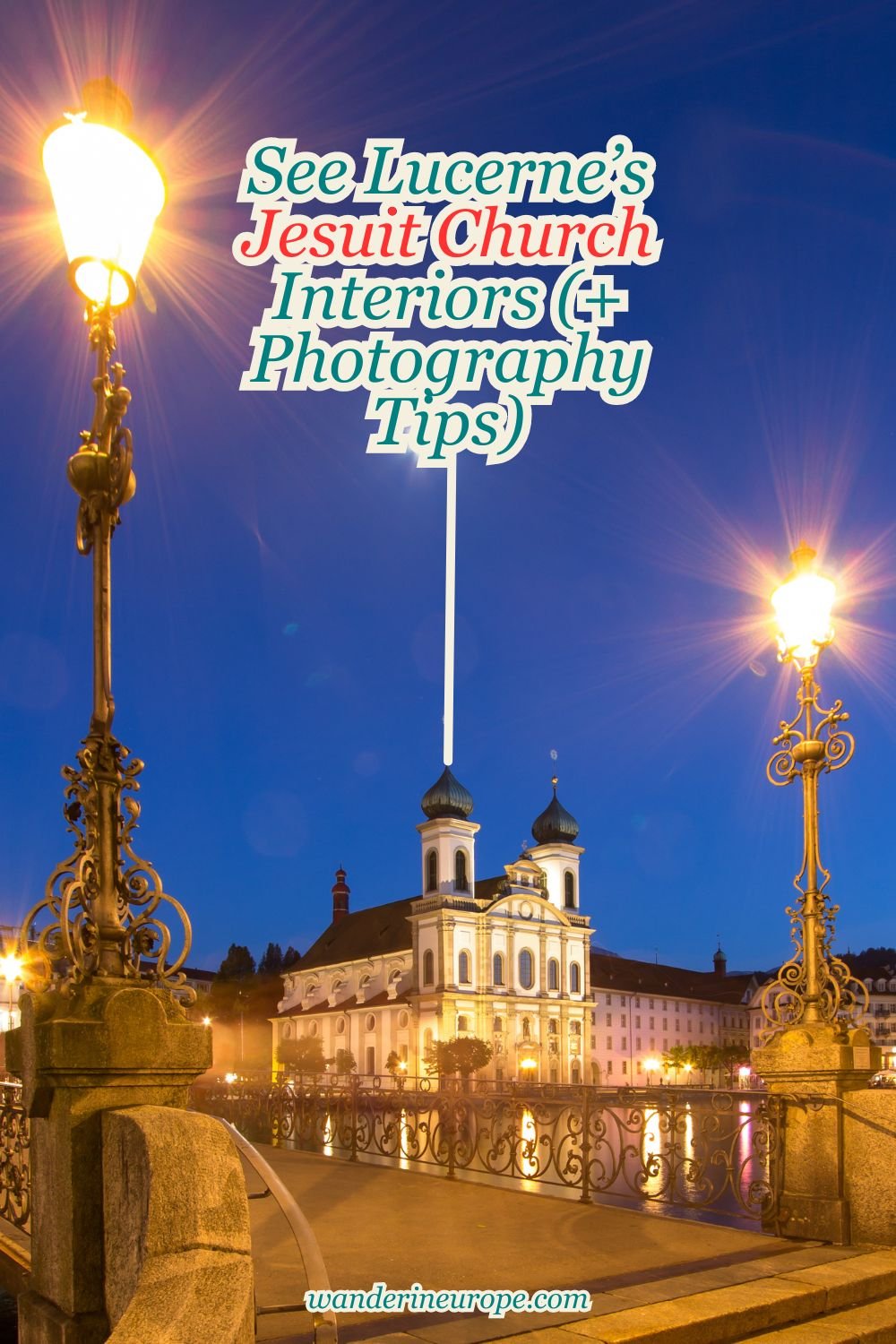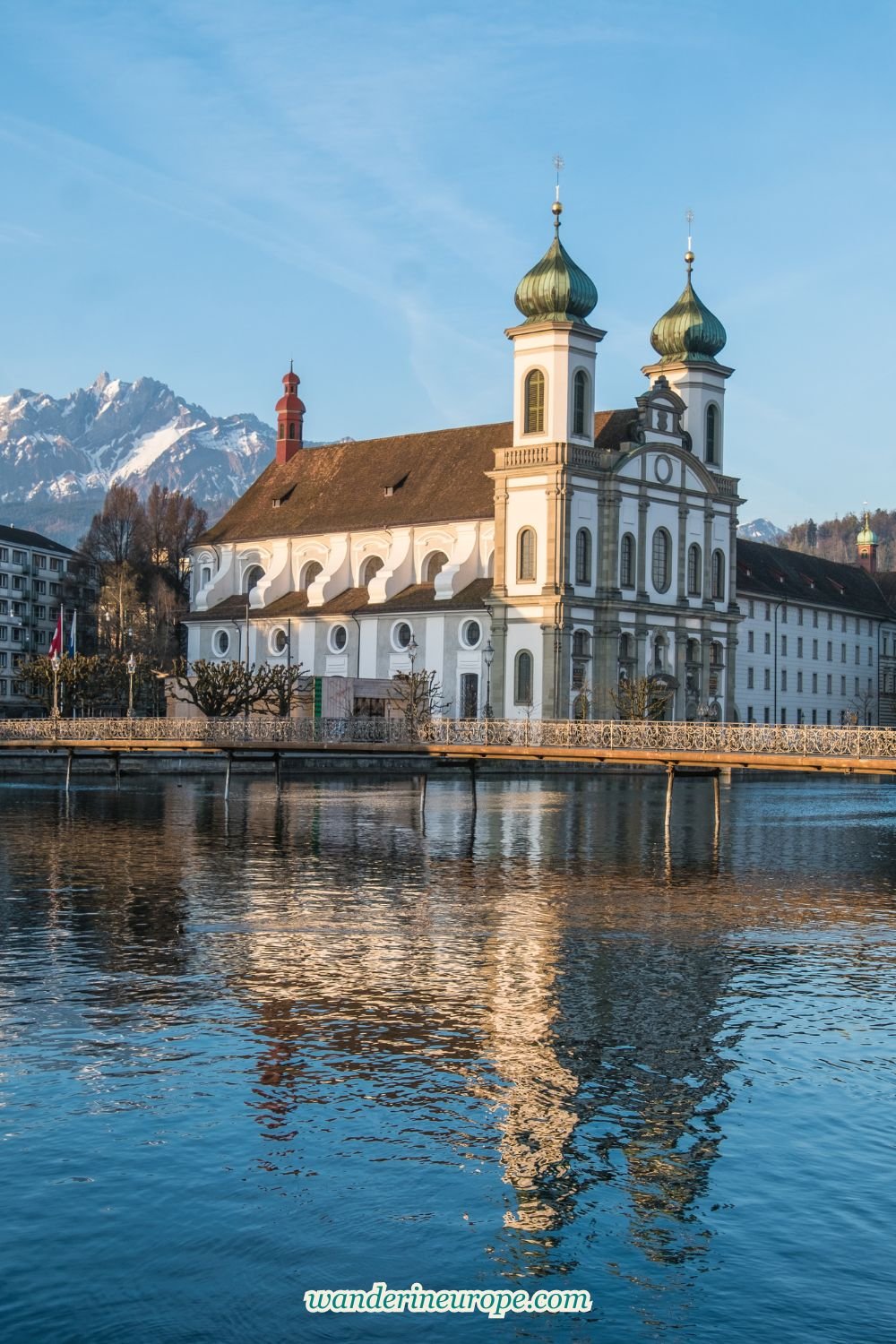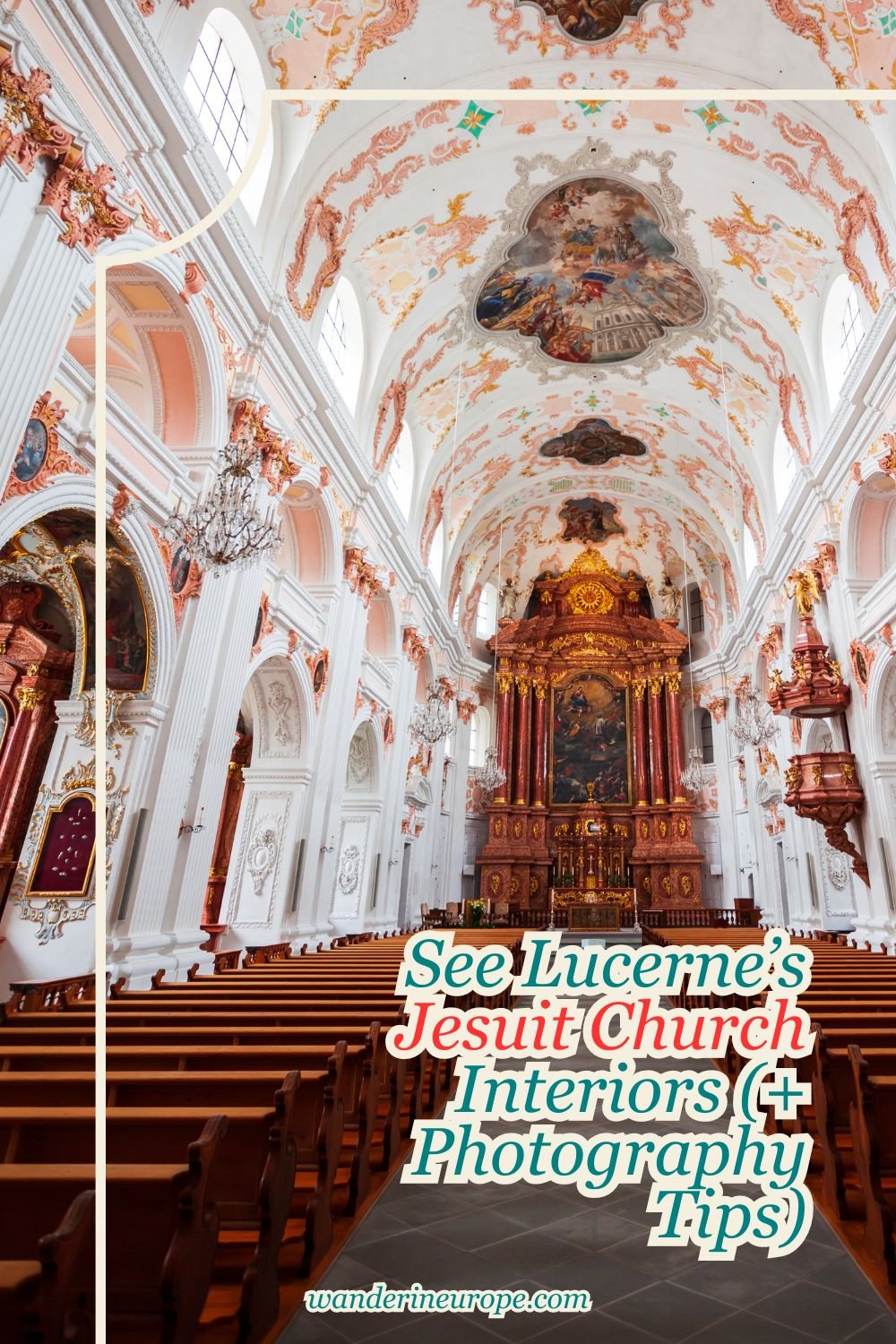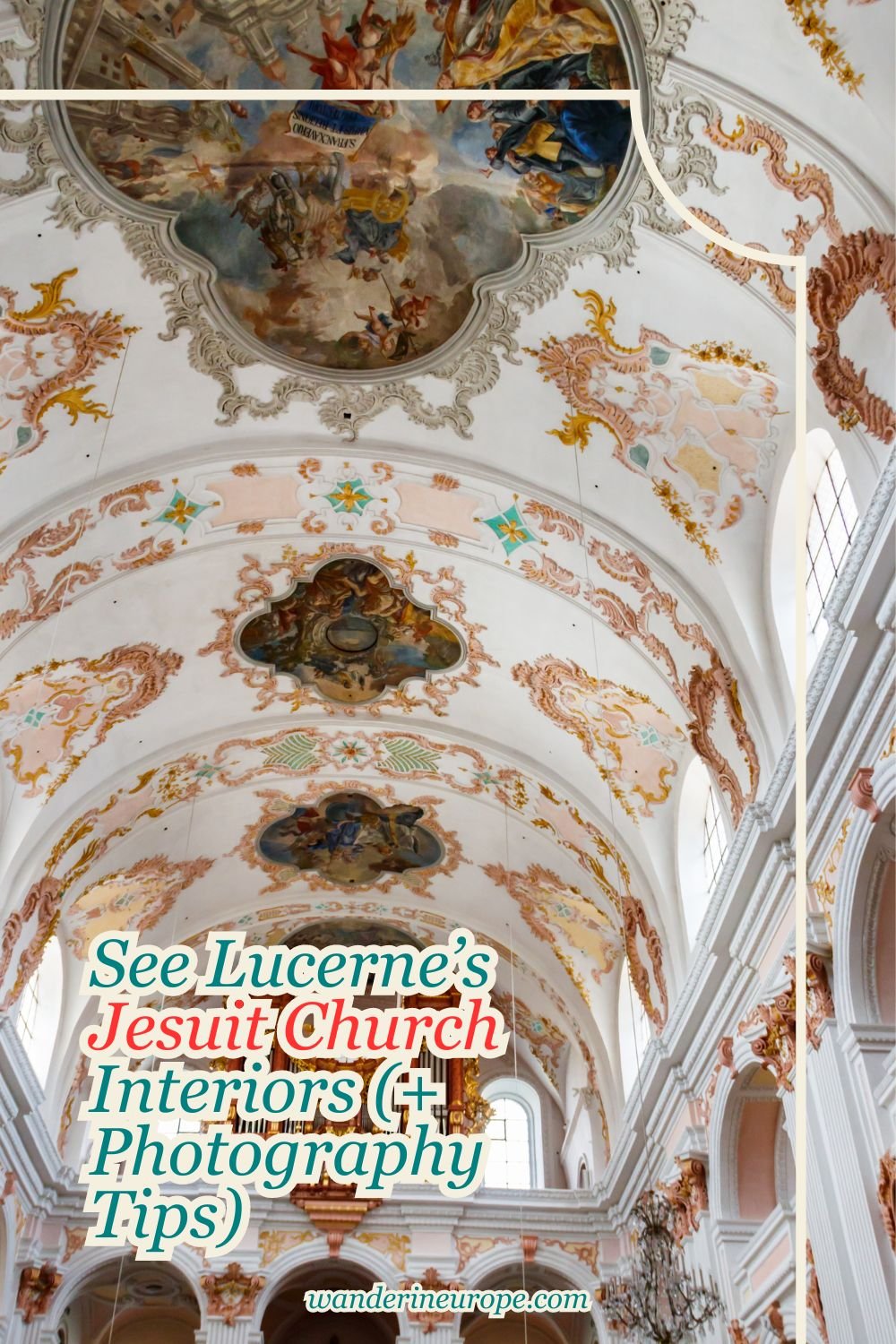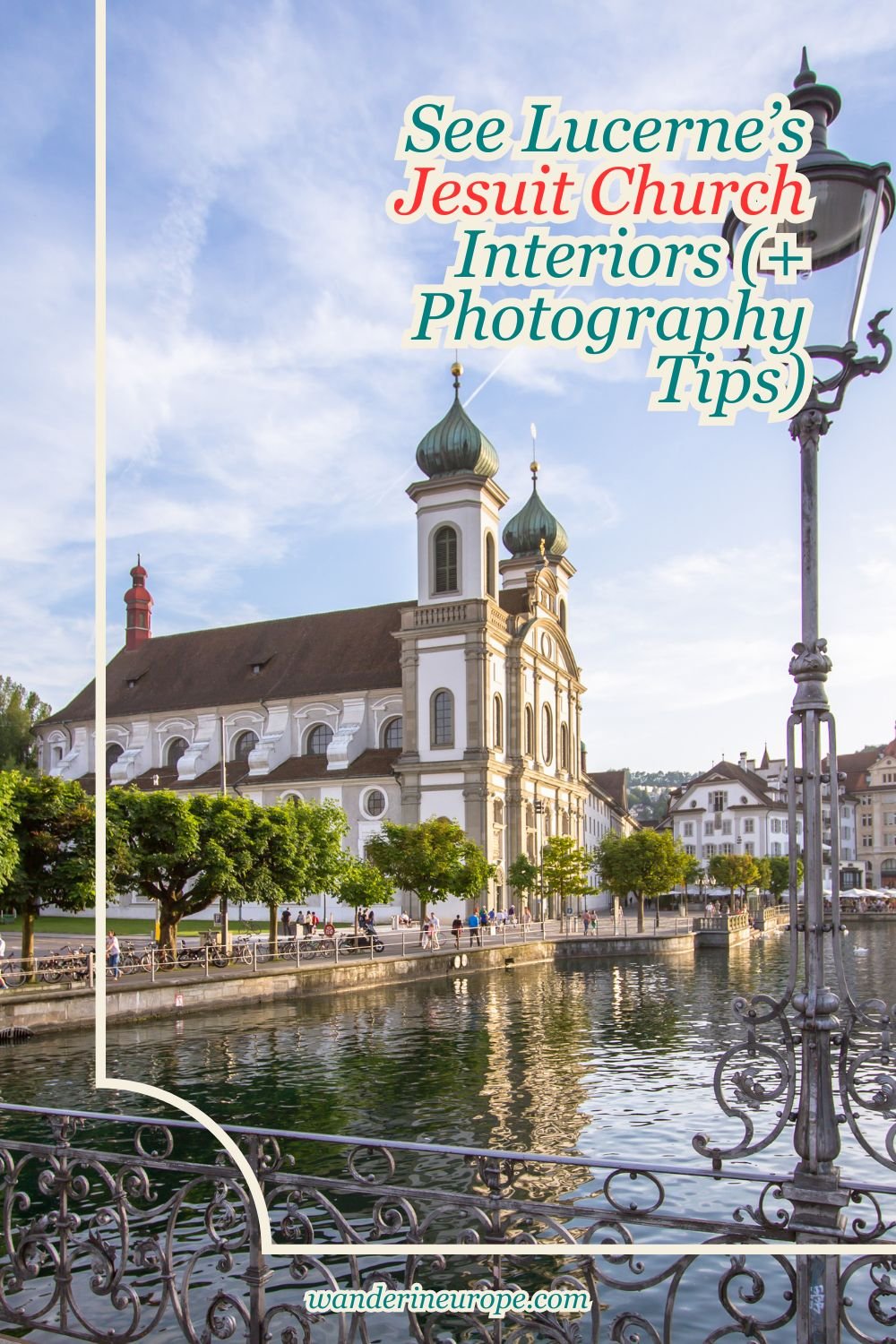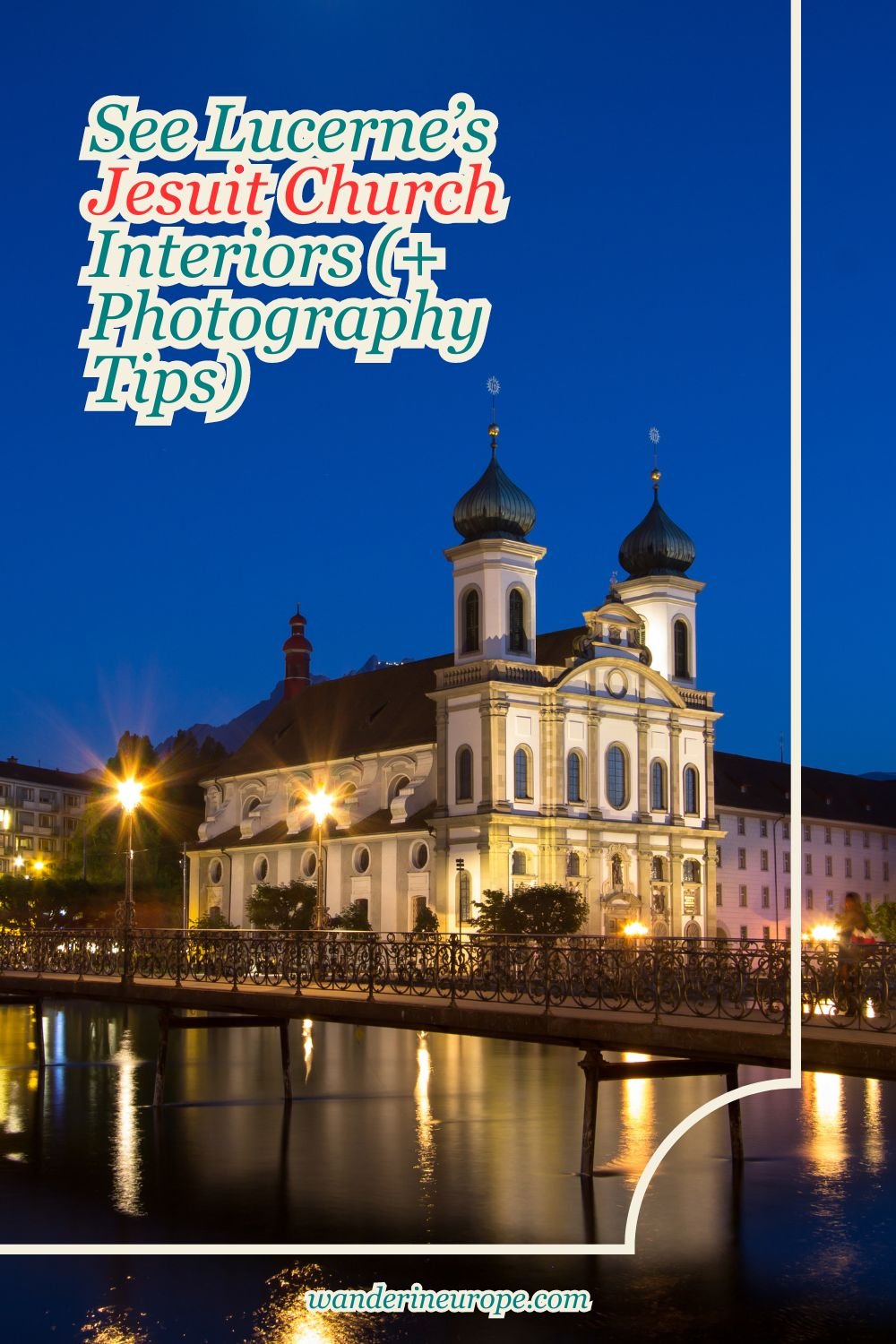See Lucerne’s Jesuit Church Interiors (+ Photography Tips)
WanderInEurope is reader-supported. Affiliate links and ads help us keep creating useful content for you.
Aside from the scenic views, there are other beautiful things in Lucerne that make me love this city so much. Even more, they’re free to visit! I can take in such beauty as long as I like, as many times as I want. One of them is the Jesuit Church — unmissable for anyone, no matter how long they plan to visit Lucerne, be it a 1-day visit, 2-day stay, or a 3-day Lucerne getaway.
This church is a must-see because, why not? It’s located within walking distance from the train station and other attractions in the city like Chapel Bridge and Musegg Wall. Visiting it requires no effort at all! In fact, every walking tour of Old Town Lucerne I know includes a stop at the Jesuit Church. But most importantly, the Jesuit Church is a picturesque landmark, and its interiors are simply gorgeous!
The Jesuit Church may not compare to the grand churches in Italy and Spain, but if you’ve been to Salzburg, Innsbruck, or Vienna, the baroque splendor inside this church might feel familiar. The Jesuit Church isn’t a particularly unique attraction in Lucerne, so like you, I wondered if this church was worth visiting at first. But once you see what’s inside, I believe you’ll also understand that it’s nice to see, even if just for a few moments.


What’s Inside?

Check out this gallery showing the beautiful interiors of the Jesuit Church.

Photography Spots
While the Jesuit Church is often just a brief stop on a trip to Lucerne, it remains a worthwhile destination, particularly for photography enthusiasts. Yes, its interiors may not be as breathtaking as other European churches, but its appearance alone offers numerous photo opportunities. The abundant details within the Jesuit Church and its stunning architectural proportions are undeniably photogenic.
If you were to ask me, “Are there also photo opportunities outside the Jesuit Church?” My response would be a resounding yes! There’s no need to wonder where these spots are, as I can tell you exactly. In summary, they’re situated along the Reuss River, and finding them requires no effort at all.

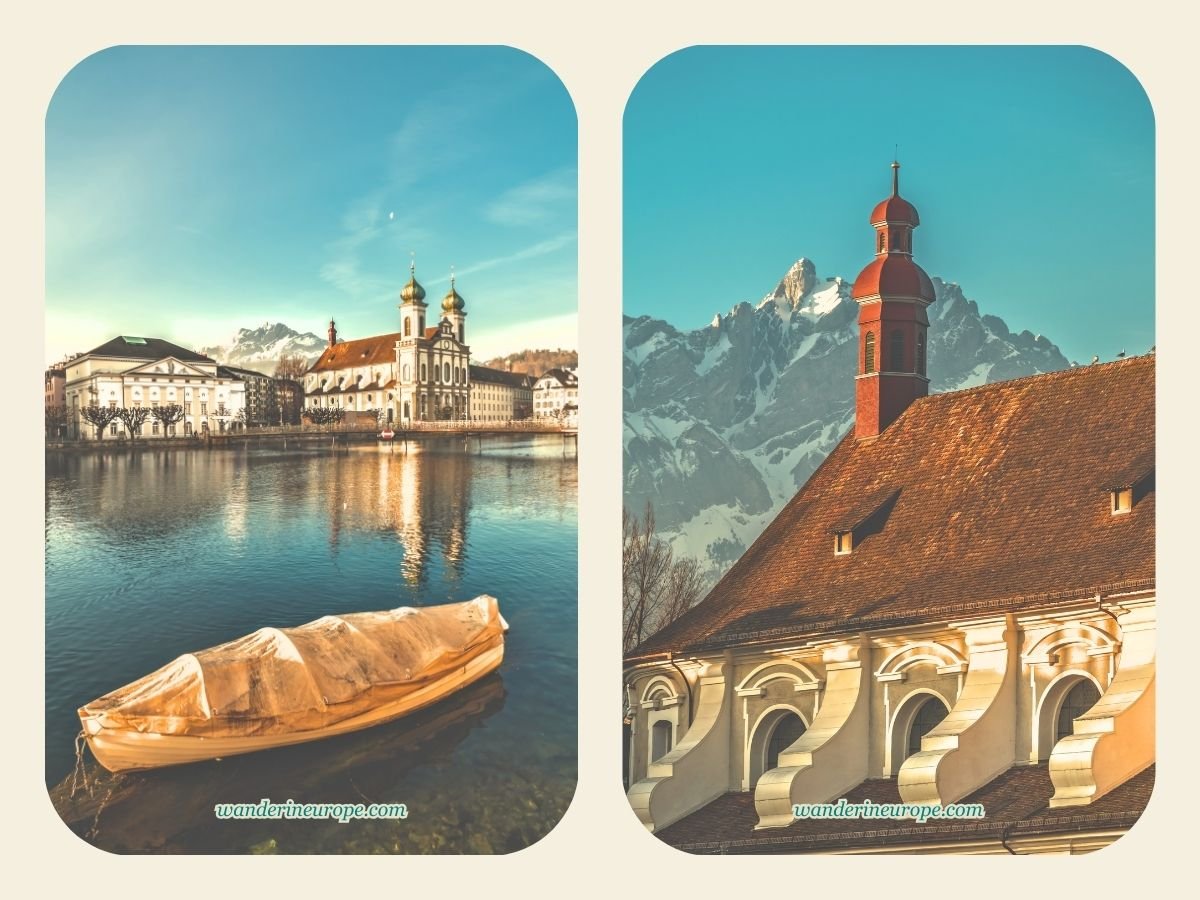
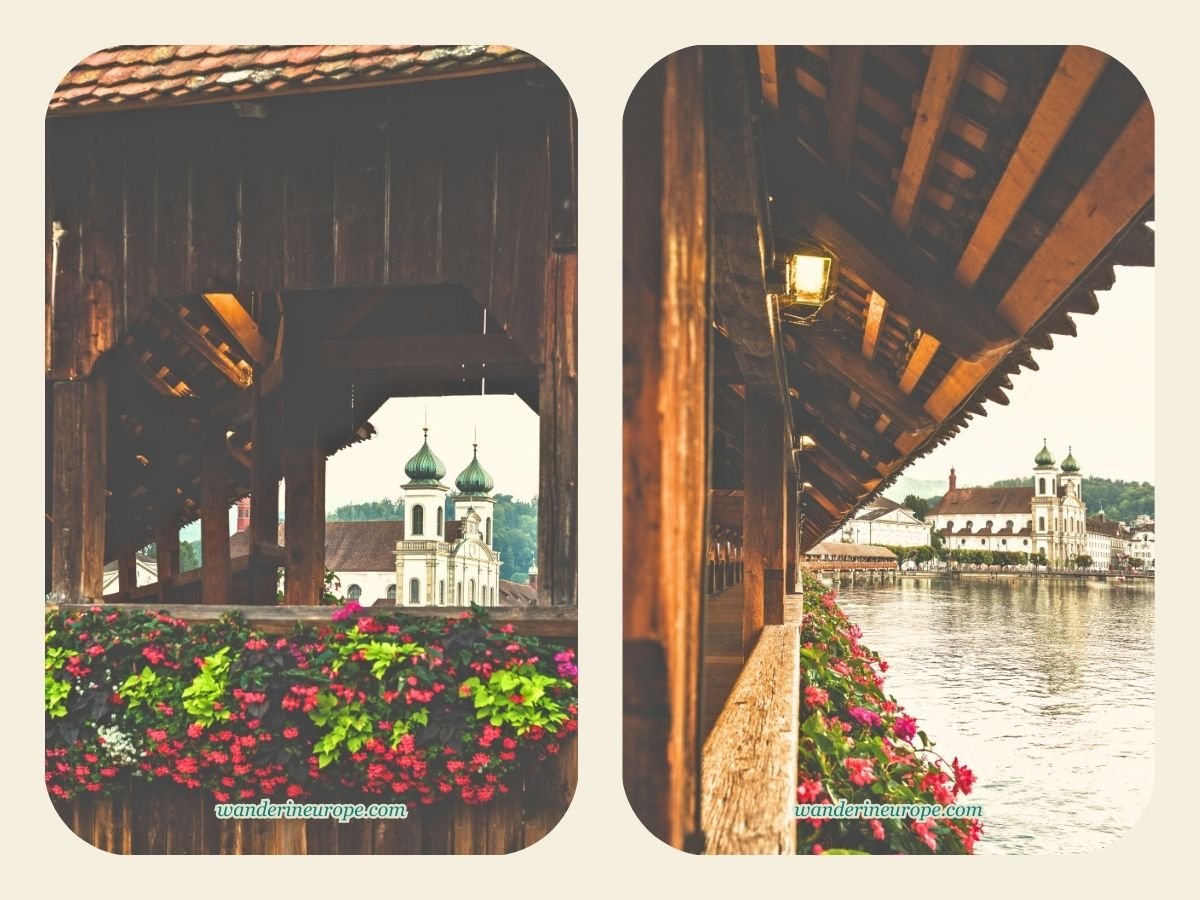

Here are the four places where I recommend taking photos of the Jesuit Church:
- Ristorante Da Ernesto (Rathausqai)
- Behind the Town Hall or Rathaussteg footbridge
- Reussbrücke (bridge)
- Chapel bridge
Visiting Information
The Jesuit Church isn’t difficult to locate, particularly if you’re already in Lucerne and strolling along the banks of the Reuss River. You can spot the Jesuit Church from as far as the Chapel Bridge and Seebrücke, both of which are just a few steps away from Lucerne’s train station. It’s one of the tallest buildings on the banks of the Reuss River (on the left side if you’re facing the Chapel Bridge or the old city). Its onion-top towers should catch your eye quickly.
To be specific, the Jesuit Church is situated in Jesuitenplatz, which is connected to the train station by Bahnhofstrasse. The church is approximately half a kilometer from the train station, a walk of about 6 to 7 minutes.
Entry to the Jesuit Church in Lucerne is free, and it’s open daily from 6:00 am until 6:30 pm. On Mondays and Thursdays, however, it opens later, at 9:30 am. (This information is according to the app.) Before you visit the Jesuit Church, be sure to download the church’s smartphone application. It can provide insights into the architecture and history of the church, as well as information about events and the latest visitor details.
See Jesuit Church’s exact location:
More in Lucerne
The Jesuit Church is one of Lucerne’s most famous landmarks, but there’s so much more to explore! Did you know the city has the most well-preserved medieval wall in all of Switzerland? It’s called the Musegg Wall, and it offers incredible architecture and some of the best views of the city. Check it out!
From great hotel deals to skip-the-line tickets and affordable eSim to cheap rentals, click here for the best hotel deals and more travel discounts.
For a convenient, unique, or more enriching visit, check out these experiences and services:

Resources
So, that wraps up what I can share about the Jesuit Church for now. I hope this brief guide has given you a glimpse of what to anticipate inside the Jesuit Church. If you’re planning a visit, the links provided below will help you make the most of your time there.
- iOS App for Jesuit Church Tour
- Android App for Jesuit Church Tour
- Official website of the Jesuit Church

Pin this to save it for later or bookmark it to read anytime.


